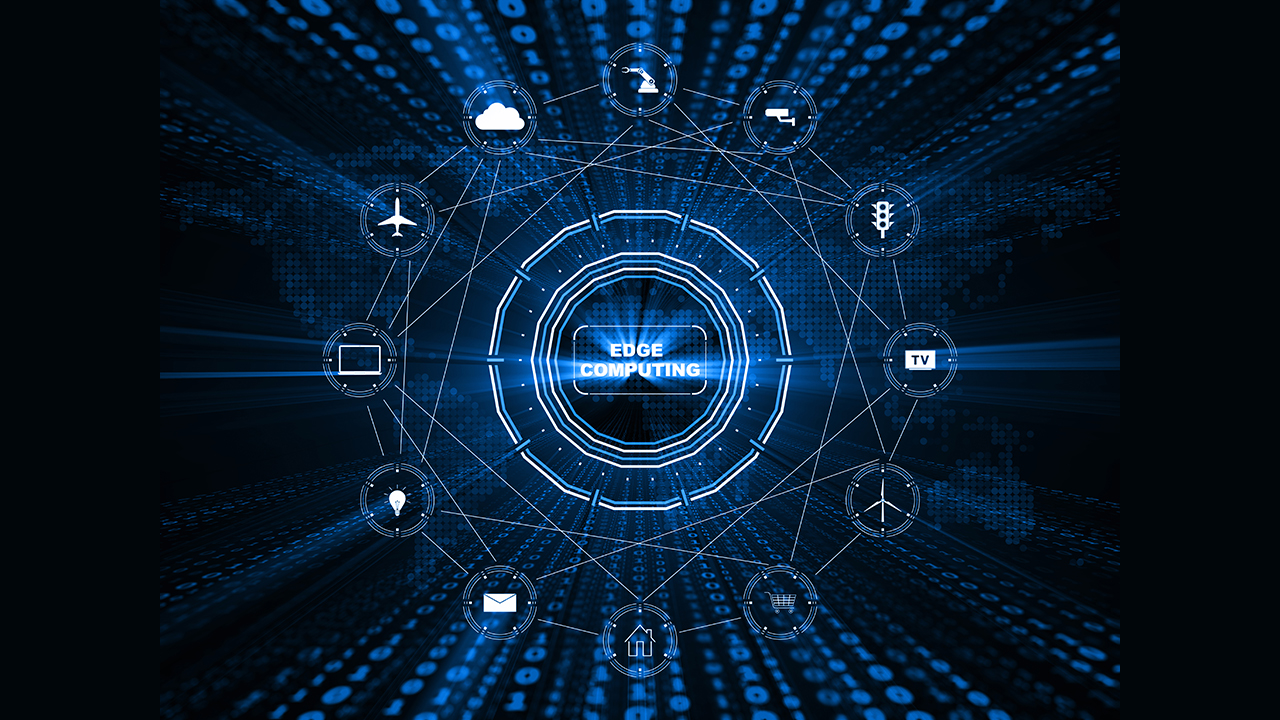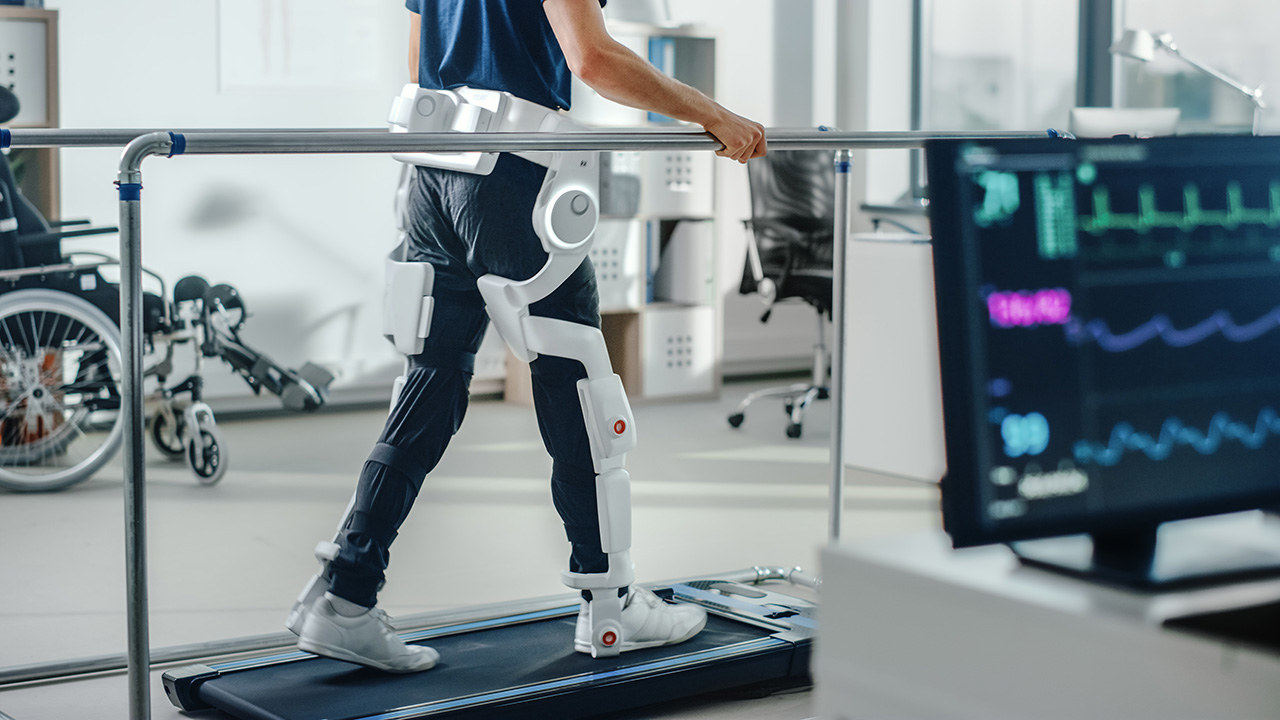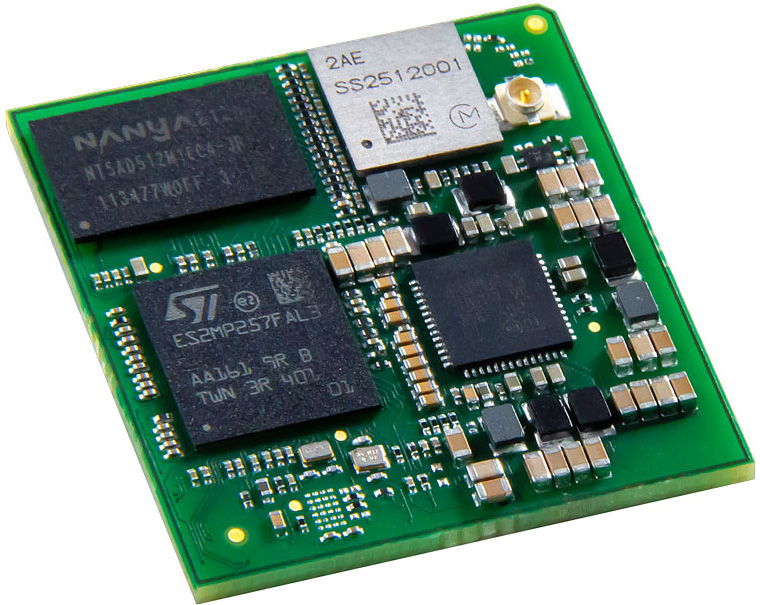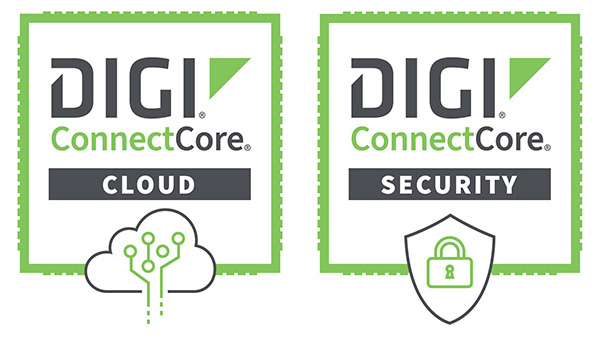AI, machine learning and edge computing are increasingly important as key components of a complete, integrated IoT solution. In this blog post, we'll provide the definition of AI/ML as a baseline, and discuss the key uses and benefits of edge computing in modern networking. And finally, we'll discuss how the integration of these technologies supports sophisticated use cases including computer vision applications. And of course we'll share how Digi supports these next-generation technologies today.
Get Our Brief
Learn about edge computing technology
Download PDF
What Is AI/ML?
Artificial Intelligence (AI) refers to the simulation of human intelligence in machines, enabling them to perform tasks like learning, reasoning, and problem-solving. Machine Learning (ML) is a subset of AI that focuses on algorithms and statistical models allowing computers to learn from and make predictions based on data. ML involves training models using data to recognize patterns, improve performance, and make decisions without being explicitly programmed. In summary, AI encompasses a broad range of capabilities, including ML, natural language processing, and robotics, aiming to create systems that can autonomously perform complex tasks — and machine learning is a key component.
Why Is Edge Computing Critical for Modern Networking?

Edge computing processes data closer to where it is generated, offering several advantages over cloud computing. These include reduced latency, as data doesn't need to travel to a distant server; improved speed and performance, crucial for real-time applications; enhanced security and privacy, since data can be processed locally; decreased bandwidth usage and costs, as less data is transmitted to the cloud; and increased reliability and availability, as local processing can continue even if the network connection to the cloud is disrupted. These benefits make edge computing ideal for IoT, manufacturing automation, autonomous vehicles, computer vision applications, and other latency-sensitive applications.
What does it all mean? In the case of manufacturing automation, for example, consider the fact that humans can manage one task at a time. Our eyes and senses can detect certain views, and certain abnormalities, but we could easily overlook a small idiosyncracy on a fast-moving production line. Compared to computers, we are very slow, and we are fallible. In computer vision applications, where multiple actions must occur rapidly (sometimes in fractions of a second) and with ultimate accuracy, human intervention is impossible. Automation requires extreme precision, rapid and robotic data processing, and actions that can be executed accurately in nanoseconds.
Another key concept is that these critical data processing and precision automation events have no room for latency. This means data cannot be sent from a device — whether it's in a manufacturing facility, a warehouse or a fast-moving vehicle — to a cloud-based application for processing, followed by another time-consuming process of returning data back to the device in the field.
Transformation at the Edge: The Impact of Edge AI and Computer Vision Across Sectors
We have just briefly explained why it is important for smart connected devices in the Internet of Things to perform processing and make decisions themselves, even with the availability of powerful server data centers or cloud services.
Let's now take a closer look at the main potential advantages of these two emerging and trending technologies: artificial intelligence at the edge and computer vision.

Bandwidth
Smart devices collect a huge amount of data compared to their bandwidth or transmission capacity. In fact, the vast majority of this data gathered by sensors is in many cases discarded. For example, simple monitoring applications focus on detecting when a threshold is exceeded, but do not identify patterns in the data to deduce possible situations in the short and medium term.
A possible and tempting solution would be to make use of cloud computing. However, there is not always enough connectivity, bandwidth, or power to reliably send customized data streams to server farms. IoT devices deployed in the field often run on batteries and are not always connected. This is where edge AI plays a crucial role. Although some machine learning models can be quite demanding in terms of computational resources, they are still far from reaching the levels required for data transmission, this being one of the tasks that consumes the most energy in an embedded system.
Some data analysis can be conducted on the device itself without the need to transmit all data to the cloud, leveraging only machine-to-machine (M2M) communication in the case of alarms and alerts resulting in the optimization of battery life. Of course, it is also quite common to come across devices without any type of connection which in the past were relegated to more limited tasks, due to their disconnection from the Internet, in which edge AI provides a wide range of possibilities as well.
Latency
 Transmitting data can take hundreds of milliseconds for a round trip from the edge to the cloud. This is in the case of connections with sufficient and reliable bandwidth, since, for example, satellite communications can delay this exchange by several minutes or even hours.
Transmitting data can take hundreds of milliseconds for a round trip from the edge to the cloud. This is in the case of connections with sufficient and reliable bandwidth, since, for example, satellite communications can delay this exchange by several minutes or even hours.
Some use cases require faster responses and with the least possible jitter. Examples such as autonomous vehicles cannot rely on communications with remote servers. Edge AI solves this problem by removing total round trip time from the equation, as the AI application runs on board.
Economy
 Let's talk about money. Connected products implicitly carry the cost derived from connectivity. The higher the bandwidth and the greater the range, the higher the bill. Edge AI reduces and, in some cases, avoids the costs of data transmission and processing in the cloud, making possible solutions that were not cost-effective in the past. In certain deployments, the cost of connectivity may not be a concern, but it is important to consider the cost of maintaining server-side infrastructure or cloud computing resources.
Let's talk about money. Connected products implicitly carry the cost derived from connectivity. The higher the bandwidth and the greater the range, the higher the bill. Edge AI reduces and, in some cases, avoids the costs of data transmission and processing in the cloud, making possible solutions that were not cost-effective in the past. In certain deployments, the cost of connectivity may not be a concern, but it is important to consider the cost of maintaining server-side infrastructure or cloud computing resources.
It is worth mentioning that, although leveraging edge AI applications does not completely get rid of these costs, due to the need for device monitoring and algorithm updating, thanks to edge AI the maintenance burden can be to a great extent decreased, e.g., reducing the number of times a technician must be sent to carry out some manual tasks on site.
Reliability
 According to the NIST glossary, the definition is as follows: “The ability of a system or component to function under stated conditions for a specified period of time.” It seems evident that products or systems controlled by edge AI are a priori more reliable than those solutions that rely on connectivity and processing externally or in the cloud. Adding wireless connectivity technologies (even wired) along with cloud technologies, means adding a complex and overwhelming array of dependencies.
According to the NIST glossary, the definition is as follows: “The ability of a system or component to function under stated conditions for a specified period of time.” It seems evident that products or systems controlled by edge AI are a priori more reliable than those solutions that rely on connectivity and processing externally or in the cloud. Adding wireless connectivity technologies (even wired) along with cloud technologies, means adding a complex and overwhelming array of dependencies.
All of this translates into a substantial reliability risk even when making the right decisions, since not everything is under control. It is true that for some use cases this scenario may still be manageable at the expense of the end user experience. However, for other cases, security is a mandatory requirement. Let's imagine an AI-based system that monitors a patient while he/she is undergoing surgery and is responsible for analyzing and detecting possible deviations from safe operating parameters. An Internet outage cannot under any circumstances put a patient's life at risk. The device must be able to work autonomously in the event of a connectivity issue since the AI is integrated and running in the embedded system itself without relying on external connections. By its nature, edge AI is complex, with a steep learning curve, and its own risks. However, it can be a pivotal tool to improve the reliability of solutions that until now depend on complex global connectivity.
Privacy
 Privacy is a very overused concept nowadays. In recent years, most of us end users have accepted with little resistance the balance between privacy and handiness. Our electronic products are made smarter at the cost of our data and decisions made on servers hosted in data centers hundreds or thousands of miles away. Even in those applications that seem innocuous, privacy is still a huge concern because there is always the opportunity for our data to be exposed due to security flaws or vulnerabilities.
Privacy is a very overused concept nowadays. In recent years, most of us end users have accepted with little resistance the balance between privacy and handiness. Our electronic products are made smarter at the cost of our data and decisions made on servers hosted in data centers hundreds or thousands of miles away. Even in those applications that seem innocuous, privacy is still a huge concern because there is always the opportunity for our data to be exposed due to security flaws or vulnerabilities.
Here, edge AI also enables a large number of use cases, especially in sectors such as industrial and healthcare. If data is processed within embedded systems, rarely transmitted to the cloud, the likelihood of compromising user privacy is marginal. Furthermore, according to tight security regulations in these sectors, the products with the best chance of being approved for market launch are those that do not collect data and that do not send streams indiscriminately to the cloud.
Examples of Edge AI and Computer Vision Implementations
Let's discuss how edge AI and computer vision implementations are integrated today in different sectors. It's only just the beginning of this exciting trend as the industry explores what's possible.

On-device Medical Imaging and Smart Rehabilitation
Edge AI is also applicable to healthcare and brings with it several benefits derived from this young technological paradigm. Medical imaging techniques traditionally transfer large amounts of data to servers for processing. Transmissions of enormous amounts of sensitive patient data over the network that put their privacy at risk and delay the delivery of diagnoses.
Real-time analysis of medical images can be performed on the device itself thanks to edge AI. Think of ultrasound machines, for example. This improves diagnostic accuracy and time while maintaining the protection of patient data. Edge AI algorithms can detect anomalies in scans and provide immediate feedback to medical specialists.
This is just the beginning as a significant increase in the number of embedded medical imaging applications is expected due to technological trends such as TinyML (Tiny Machine Learning) focused on the deployment of models to low-power edge devices.
We can also talk about what is to come in terms of smart rehabilitation that benefits from real-time feedback to tune up medical therapies and improve patient progress. The use of on-site inference allows edge AI medical devices to analyze sensor data, adapt to individual needs and characteristics of each patient in real time, and improve their comfort as well as the effectiveness of the therapy, and get the most out of rehabilitation sessions without requiring continued supervision.
Improvements in Fast-Paced Logistics Applications
 Thanks to QR code scanners with edge AI and computer vision integrated, the supply chain industry is enjoying the benefits of edge AI/ML and computer vision.
Thanks to QR code scanners with edge AI and computer vision integrated, the supply chain industry is enjoying the benefits of edge AI/ML and computer vision.
Think about the number of parcels that move across the world from the moment we confirm our shopping cart until the shipping company delivers them to our doorstep a few days later. Add to this the returns of those products that did not meet our expectations. The volume of packages is enormous, and their logistical management is incredibly complex.
One of the most used tools in warehouses are handheld barcode or QR code readers. Here the combination of edge AI together with computer vision on the device itself makes it possible to overcome the challenge of reading damaged or highly distorted codes or even under blister packs that are not possible to decode with the traditional approach of rule-based algorithms. The latter is a very early/primitive type of AI that uses a set of prewritten rules, involving human knowledge encoded in the form of rules such as if-then statements, to make decisions and solve problems.
Thanks to higher decoding performance it is possible to figure out codes with stains, scratches and rough backgrounds. We all know that our packages are not received or shipped immaculately. Local decoding brings low latency and reduced power consumption, among other advantages inherent to edge AI.
Real-time Quality Control in the Industrial Sector
 In the demanding industrial sector, customer expectations and strict industry regulations and standards require maintaining high product quality. Edge AI enables real-time quality control using on-device inference for automatic detection of anomalies and defects.
In the demanding industrial sector, customer expectations and strict industry regulations and standards require maintaining high product quality. Edge AI enables real-time quality control using on-device inference for automatic detection of anomalies and defects.
We can achieve this thanks to the deployment of AI models1 directly in embedded systems that perform the arduous tasks of analyzing data from sensors or objects in real time through computer vision and with high accuracy to trigger corrective actions immediately once defects are detected and thus address potential problems without delay.
There are multiple advantages derived from this new approach such as the drastic reduction of latency in quality control processes. These include:
- Improvements in data security
- Cost savings by eliminating complex data storage and communication infrastructures
- Waste reduction
- Maintaining sustainability
- Avoiding costly recalls of products misclassified as compliant
- Ensuring the launch of products that meet market requirements on time and before competitors
In fact, another underlying advantage of embedded edge AI solutions is their great flexibility in dynamic manufacturing processes, being able to adjust to the already common rapid customer changes.
Enhancements to Urban Mobility and Traffic Safety
 Another area of special interest is traffic management and its relationship with the quality of life of urbanites. Edge AI makes it possible to improve urban mobility through traffic prediction models that analyze data from cameras and sensors scattered throughout cities. For example, imagine an AI-enabled bus service equipped with sensors that adjust routes and schedules in real time according to traffic conditions, weather conditions or traffic accidents, improving the passenger experience and reducing delays.
Another area of special interest is traffic management and its relationship with the quality of life of urbanites. Edge AI makes it possible to improve urban mobility through traffic prediction models that analyze data from cameras and sensors scattered throughout cities. For example, imagine an AI-enabled bus service equipped with sensors that adjust routes and schedules in real time according to traffic conditions, weather conditions or traffic accidents, improving the passenger experience and reducing delays.
Beyond optimizing public transport routes, edge AI allows streamlining traffic signal sequences. Let's think about adaptive traffic lights that use real-time data from traffic cameras and sensors to enhance signal synchronization, for example, adjusting the duration of the green light, allowing congestion to be reduced, which in turn translates into lower emissions, getting closer to the objectives of environmental sustainability.
Introducing Digi ConnectCore® MP25: Our Latest Innovative SOM Solution with NPU and ISP
 It's time to unlock the full potential of edge AI and computer vision using next generation technology and cutting-edge embedded systems with the newest member of the Digi ConnectCore ecosystem of OEM solutions — the Digi ConnectCore MP25 STM32MP25 system-on-module (SOM).
It's time to unlock the full potential of edge AI and computer vision using next generation technology and cutting-edge embedded systems with the newest member of the Digi ConnectCore ecosystem of OEM solutions — the Digi ConnectCore MP25 STM32MP25 system-on-module (SOM).
Digi ConnectCore MP25 is a versatile, secure and cost-effective wireless SOM designed for industrial applications and smart connected devices. STMicroelectronics' STM32MP25 adds time-sensitive networking (TSN), a neural processing unit (NPU) and image signal processing (ISP) for edge AI and computer vision applications. The compact SMTplus® form factor (30 x 30 mm) is ideal for small portable devices where lower power consumption is critical.
Featuring AI and machine learning capabilities, and highly reliable wireless connectivity, it is the perfect solution for secure computer vision applications. Highly robust for demanding industrial, medical, utilities and transportation use cases and built for longevity, scalability and 100% operating time for 10+ year product lifecycles. Designed to reduce cost, accelerate development, and ensure the quality of edge AI-based products.
With powerful features to support applications where object recognition is critical:
- Security and industrial vision cameras
- Traffic monitoring and management systems
- Smart portable devices
- Industry 4.0 — manufacturing automation
Digi ConnectCore MP25 highlights:
 Industrial-grade, scalable, embedded SOM platform
Industrial-grade, scalable, embedded SOM platform- NPU and ISP providing edge AI and computer vision capabilities
- Pre-certified dual-band Wi-Fi 6 (tri-band 6E ready) 802.11ax and Bluetooth® 5.4
- Power management with hardware and software support
- Digi SMTplus form factor (30 x 30 mm) for ultimate reliability
- Seamless cellular modem and Digi XBee® integration
- Digi ConnectCore Cloud Services for remote access, device management, secure over-the-air (OTA) firmware updates and IoT application enablement
- Digi ConnectCore Security Services to ensure security throughout the entire product lifecycle
- Digi Embedded Yocto Linux and Digi TrustFence® security support
- Turnkey development services available from Digi WDS
Get the Datasheet
Learn more about Digi ConnectCore MP25
Download PDF
Next Steps
1. An example of an AI model is knowledge that has been generated normally in the cloud by training with huge amounts of data. These models are deployed on edge devices in situ or through cloud services such as Digi ConnectCore Cloud Services. Models are generated outside edge devices because they require significant computational power. That is one of the potential businesses of edge AI (AI in general).